The Ultimate List of Free Photo Spots In Kaohsiung Taiwan
March 11, 2025
Last Updated on March 12, 2025 by Erin Donahue
As a travel photographer who’s half-Taiwanese, exploring cities like Kaohsiung offers an incredible urban landscape to capture. This might be a controversial take, but while Taipei has a lot of photo spots, Kaohsiung feels more photogenic to me with its unique blend of harbor views, modern architecture, and cultural landmarks.
The star attraction for cityscape photography here is undoubtedly 85 Sky Tower (高雄85大樓), Taiwan’s second tallest building after Taipei 101. This list of photo spots in Kaohsiung is ever-growing, and I only want to expand on it when I myself have actually photographed at the locations. So be sure to check back periodically since I travel to Taiwan frequently!
Disclosure: Some links may be affiliate links. This means that I may earn a small commission if you decide to buy (at no additional cost to you).
Dome of Light (光之穹頂)
Considered one of the most beautiful metro stations in the world, Formosa Boulevard Station’s (美麗島車站) crown jewel is the breathtaking ‘Dome of Light,’ an awe-inspiring glass art installation that spans 30 meters in diameter.
Created by Italian artist Narcissus Quagliata, this masterpiece took four years to complete and uses over 4,500 glass panels to tell the story of human life through four themes: water, earth, light, and fire. However, there’s more to this station than just its stunning aesthetics. It takes its name from the historic “Formosa Incident” (美麗島件事) of 1979, a pivotal pro-democracy demonstration that helped shape Taiwan’s journey to democracy. The dome’s message of love and tolerance serves as a beautiful tribute to those who fought for the civil liberties that Taiwan enjoys today.
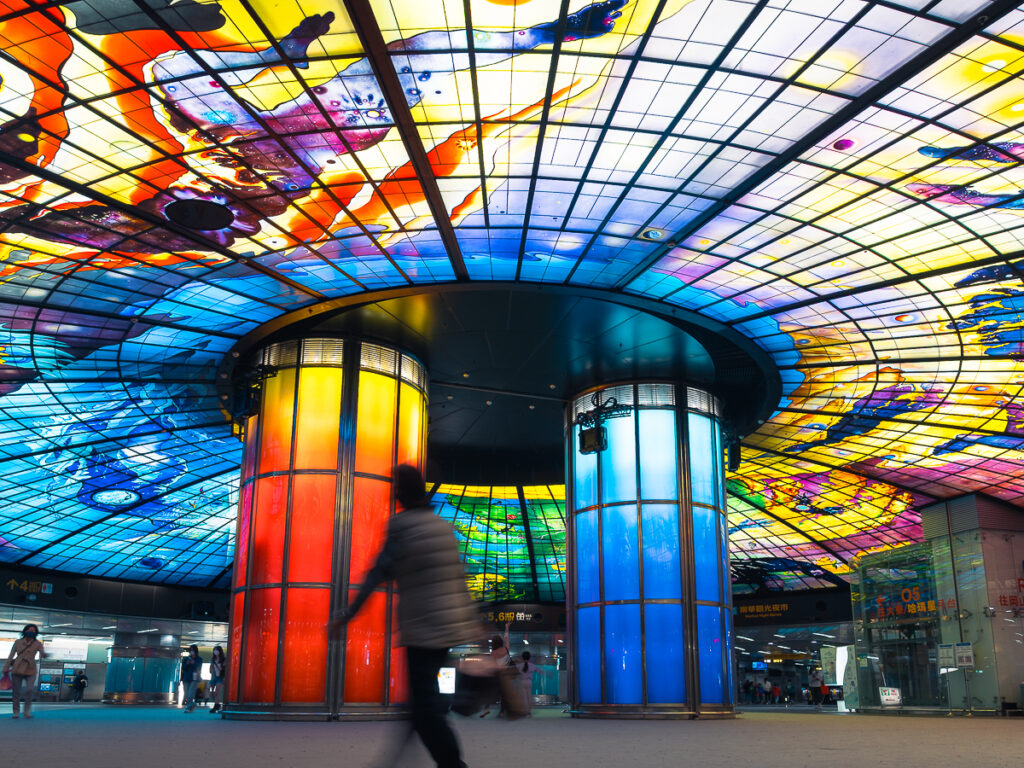
85 Sky Tower (高雄85大樓)
As you make your way deeper into the city center, you can’t miss 85 Sky Tower, formerly known as the T & C Tower or Tuntex Sky Tower, which stands as a defining feature of Kaohsiung’s skyline. Built between 1994 and 1997 by the same architectural firm behind Taipei 101, this 85-story skyscraper reaches a height of 347.5 meters, with an antenna extending its pinnacle to 378 meters. Its design cleverly incorporates the Chinese character ‘gāo’ 高 (meaning tall), also part of the city’s name.
While it remains the second tallest building in Taiwan after Taipei 101, the tower’s glory has faded in recent years. The once-bustling shopping mall has closed, offices have emptied, and even the observatory deck, which offered spectacular city views, now stands vacant. I witnessed this decline firsthand during my 2018 visit, though I was able to capture progress shots of the Port Cruise Terminal construction, part of the Asia New Bay Area project.
Despite its largely abandoned state, the tower’s prime location near the harbor continues to draw tourists, making it an enduring landmark in Kaohsiung’s urban landscape. As mentioned above, I was able to see it from the hotel I stayed at on my most recent trip when I stayed at TAI Urban Resort.
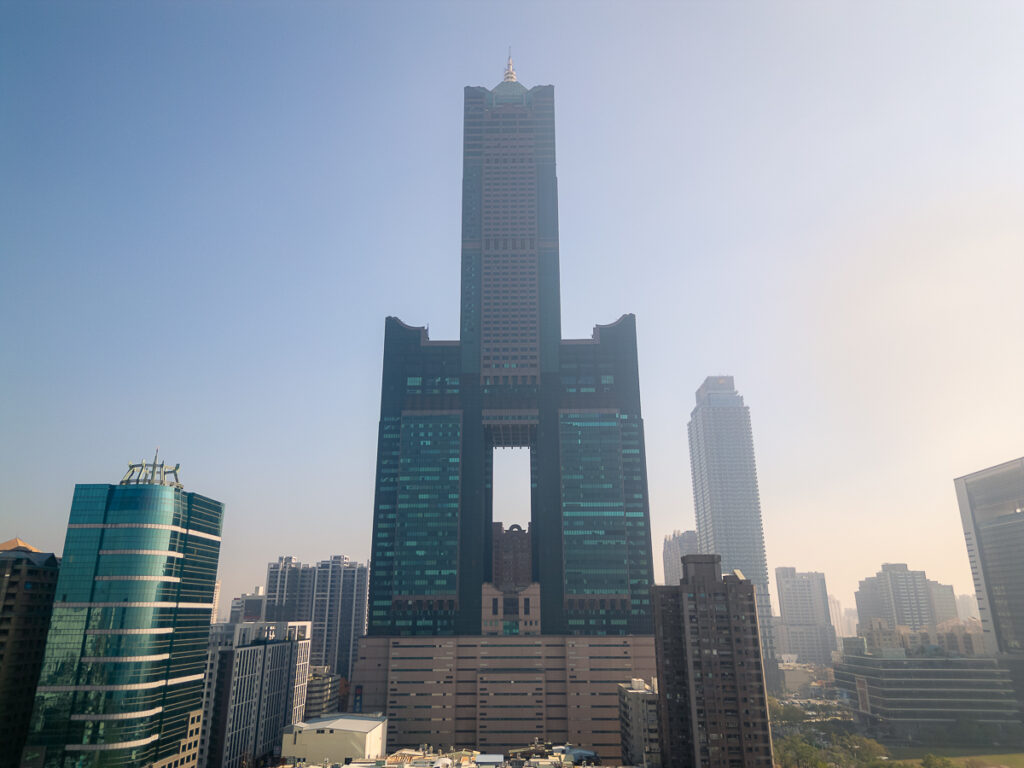
Lotus Pond (蓮池潭)
Lotus Pond is a stunning artificial lake that has been captivating visitors since 1951. What makes this place special are the incredible temples that surround it! As one of the most photographed Kaohsiung Taiwan tourist spots, the pond features numerous structures and temples, though I myself didn’t do a full loop.
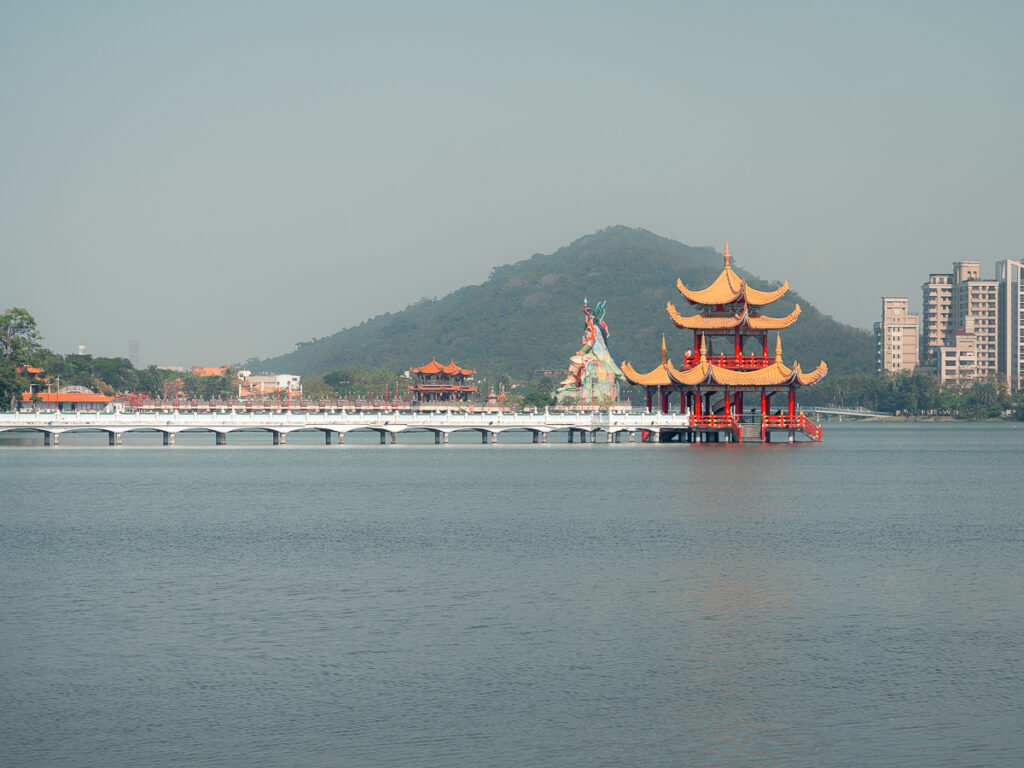
Dragon and Tiger Pagodas (龍虎塔)
The most photographed spot has to be the Dragon and Tiger Pagodas. These seven-story towers sitting right on the lake are more than just pretty buildings. Be sure to enter through the dragon’s mouth and exit through the tiger’s for good fortune. Just across from these pagodas stands the historic Chiji Temple (慈濟宮). This place is actually what ordered the construction of the pagodas back in 1974.
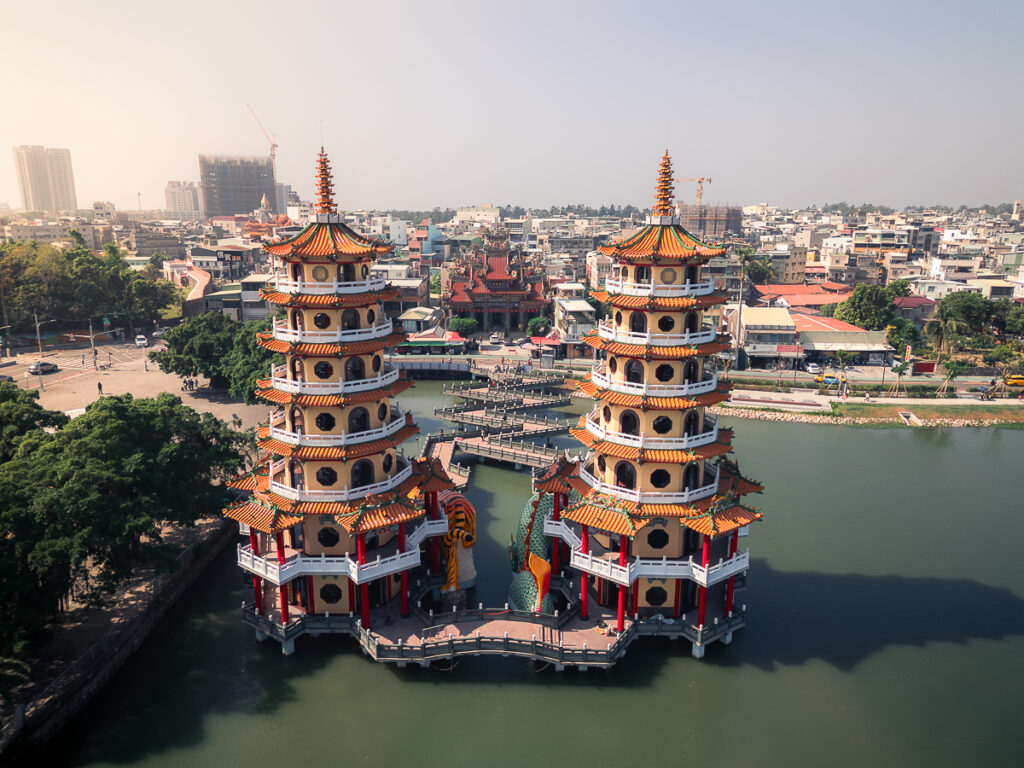
Spring and Autumn Pavilions (春秋閣)
A short walk away is the Spring and Autumn Pavilions. These yellow and green octagonal structures connect by a winding bridge, with a remarkable statue of Guanyin riding a dragon between them. Legend has it the Goddess herself appeared in the clouds and requested builders to construct this statue.

Pei Chi Pavilion (北極亭)
Further down stands the impressive Pei Chi Pavilion, housing some of Asia’s tallest water statues, featuring a massive 38.5-meter sword in the hand of Xuan Tian Shang Ti, the ‘God of War’.
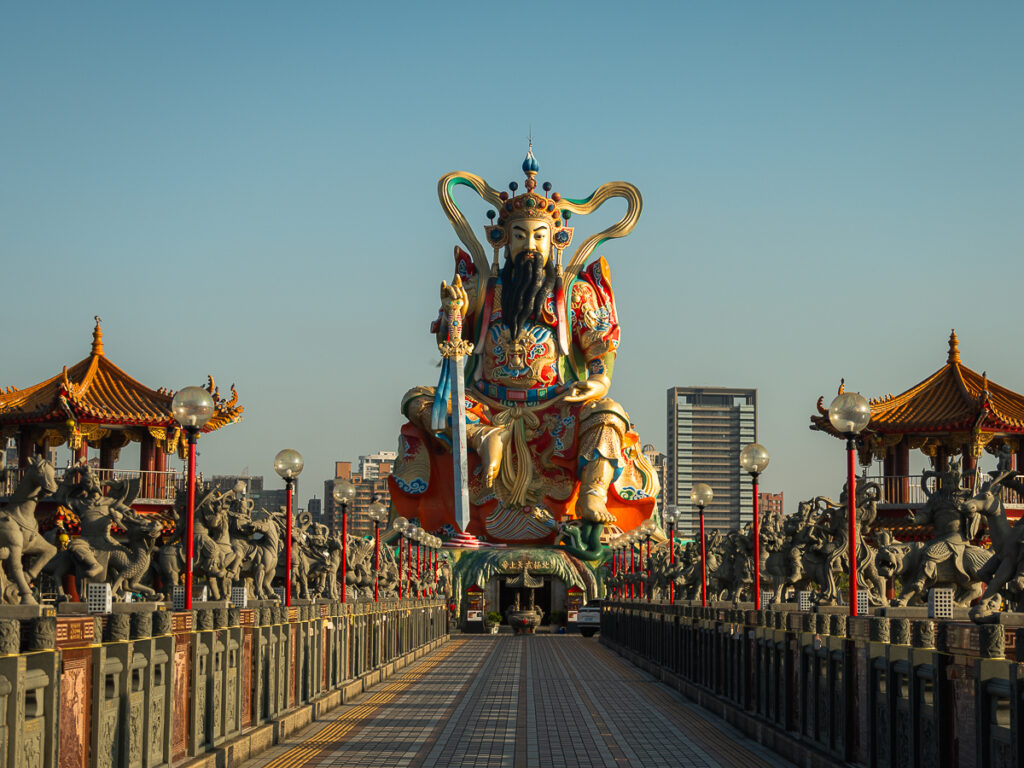
Kaohsiung LRT Green ‘Totoro Tunnel’
If you’re a Studio Ghibli fan, you’ll immediately recognize why Kaohsiung Light Rail’s ‘Totoro Tunnel’ earned its nickname. Honestly, unless you have a photographer’s eye you might find this underwhelming, but part of our job is finding the beauty in everything. Just remember to keep a safe distance from the tracks and mind the warning signals when taking photos of this Instagram-worthy location.
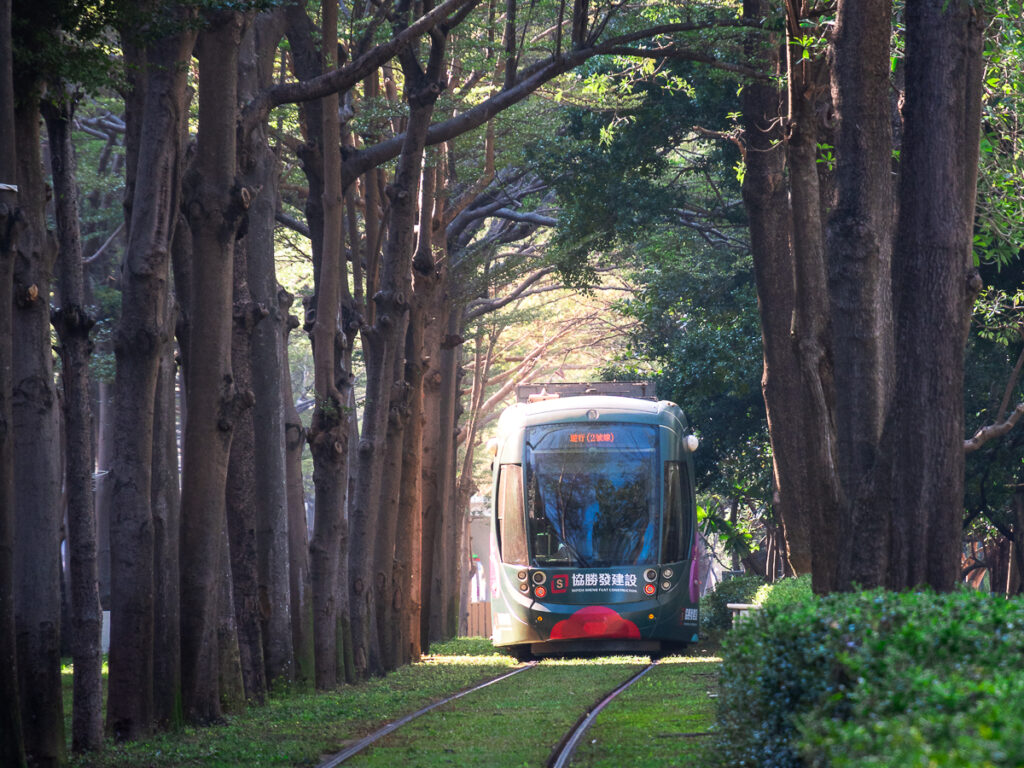
Sanfong Temple (高雄三鳳宮)
While Sanfeng Temple (高雄三鳳宮) primarily serves as a worship site rather than a designated photo spot in Kaohsiung, its breathtaking display of hanging lanterns has transformed it into one of the city’s most photogenic locations. The temple truly comes alive after sunset when dozens of crimson lanterns illuminate the space with a warm, ethereal glow. Each lantern strand creates leading lines that draw your eye through the frame, making for compelling compositions from nearly any angle. If you visit Kaohsiung during Chinese New Year, you’ll find the temple adorned with even more lantern strands, creating an even more spectacular photo opportunity.
When photographing here, I recommend showing respect to worshippers by staying in the peripheral areas and using a lens that allows you to capture the scene without disrupting religious activities. This balance of cultural appreciation and photography etiquette will help you capture authentic images while honoring the temple’s primary purpose.
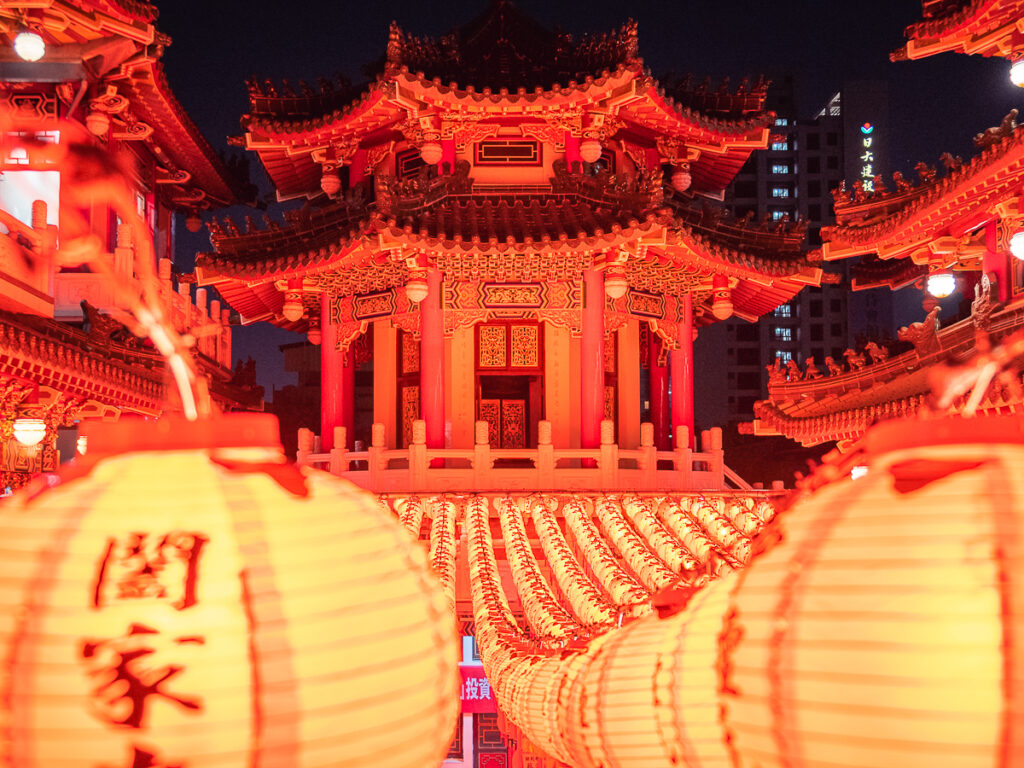
Kaohsiung Music Center (高雄流行音樂中心)
An interesting architectural design is the Kaohsiung Music Center (高雄流行音樂中心) , designed by a Spanish architecture firm, the center is marine inspired and consists of the Wave Tower, Coral Zone, Whale Bridge, Dolphin Walk, and Live Warehouse.

Kaohsiung Port Cruise Terminal (高雄港旅運中心)
An architectural design to incorporate into your Kaohsiung photo spots is the Port Cruise Terminal. I saw this building back in 2018 when it was in its infancy and construction just started on it. When I returned in 2025, I found it completed in all its grandeur. In person, it looked like a huge whale, but the building design is a silver-white hull with a towering chimney—making for a dramatic silhouette against the setting sun.

Kaohsiung Exhibition Center (高雄展覽館)
Another interesting architectural design to incorporate into your Kaohsiunghenge photos is Kaohsiung’s Exhibition Center.
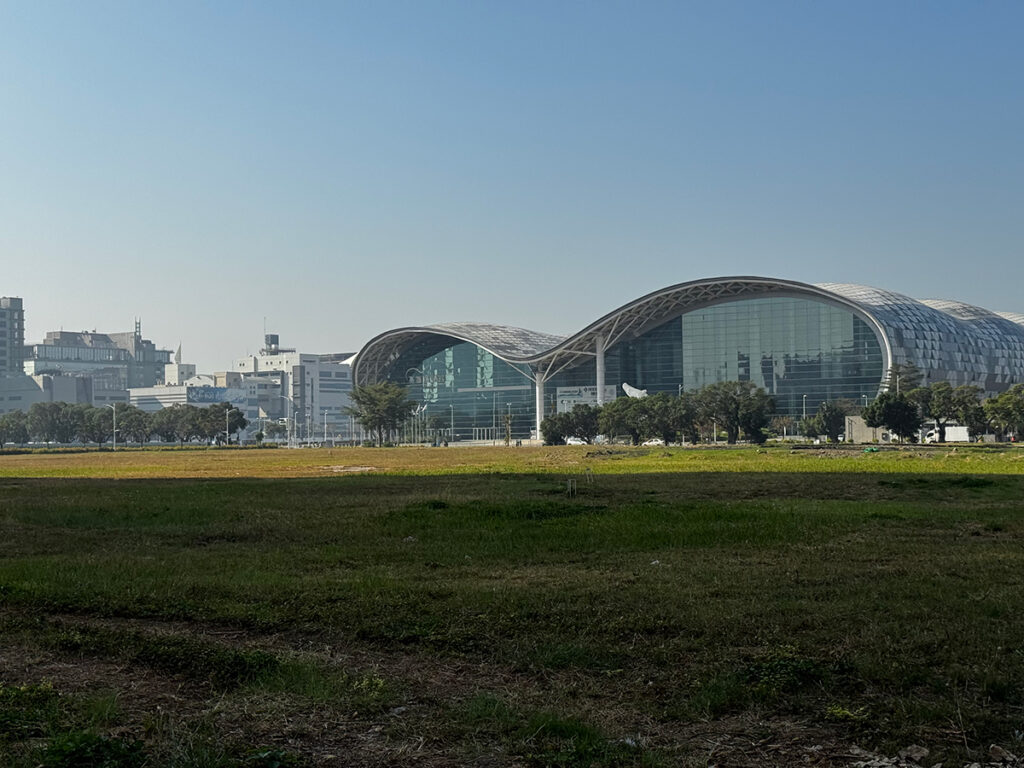
Pier-2 Art Center (駁二藝術特區)
As Taiwan’s largest port city, Kaohsiung harbors a rich maritime history that’s beautifully preserved at the Pier 2 Art Center (駁二藝術特區). This creative district emerged from a collection of abandoned shipping warehouses that once served the bustling Kaohsiung Port. Most of these structures date back to the 1970s and stand near the port entrance, directly across from the northern tip of Qijin Island. While it’s named Pier 2, the district has grown to encompass piers 1 through 10 out of Kaohsiung Port’s impressive 122 piers.
Today, photographers visiting this unique photo spot in Kaohsiung will discover a treasure trove of visual opportunities. The converted warehouses now house hundreds of shops, cafés, artist studios, music venues, and bars. The juxtaposition of industrial architecture with colorful street art creates compelling compositions at every turn. I particularly enjoy shooting here during the golden hour when the low sun casts dramatic shadows across the textured warehouse walls.
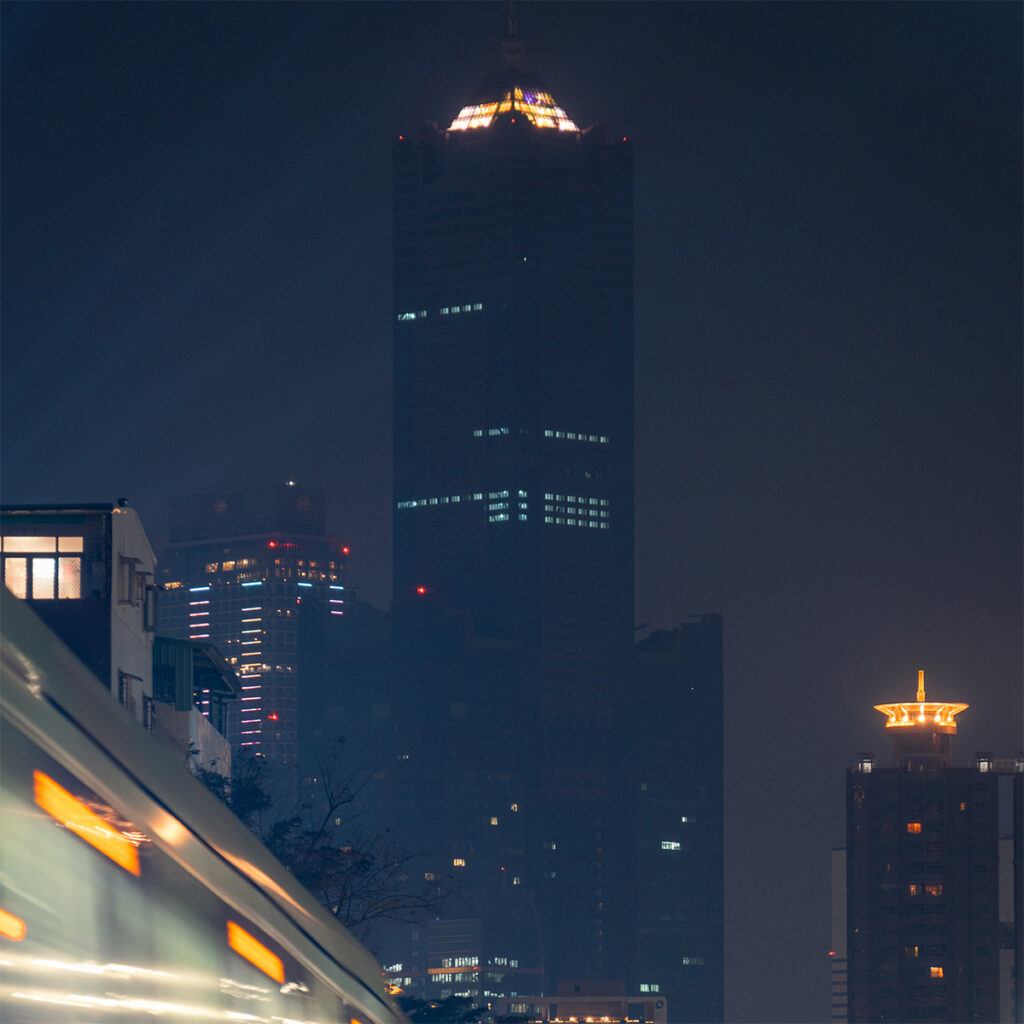
The intersection of Dayong Rd and Bisin St in Yanchen District
(在高雄市鹽埕區大勇路與必信街口)
This intersection is not a popular photo spot in Kaohsiung, but it provides the perfect compression shot of the residential and commercial buildings framing 85 Sky Tower. Don’t judge all the dust specks floating throughout the photo. I took it in 2018 when I still didn’t know how to shoot in manual mode and didn’t get a chance to take a new photo on my most recent trip.
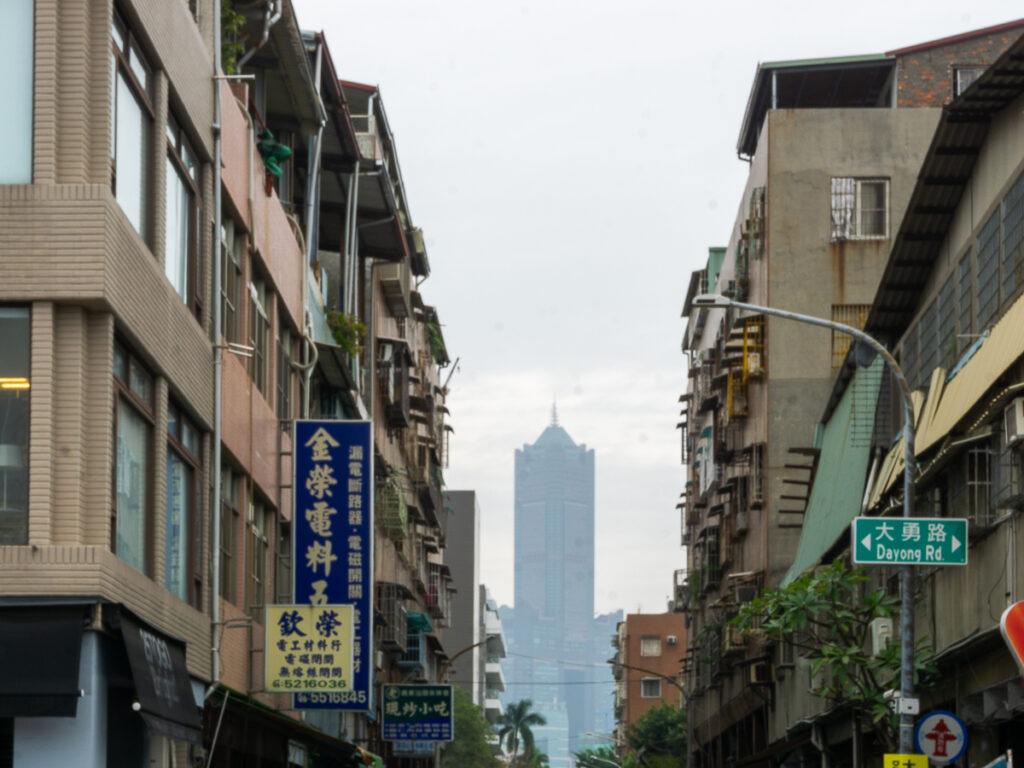
Photographing Kaohsiunghenge
For a truly spectacular photo opportunity that costs nothing but perfect timing, don’t miss Kaohsiunghenge. This is Kaohsiung’s answer to the famous Manhattanhenge phenomenon during sunset in the winter months (November through January).
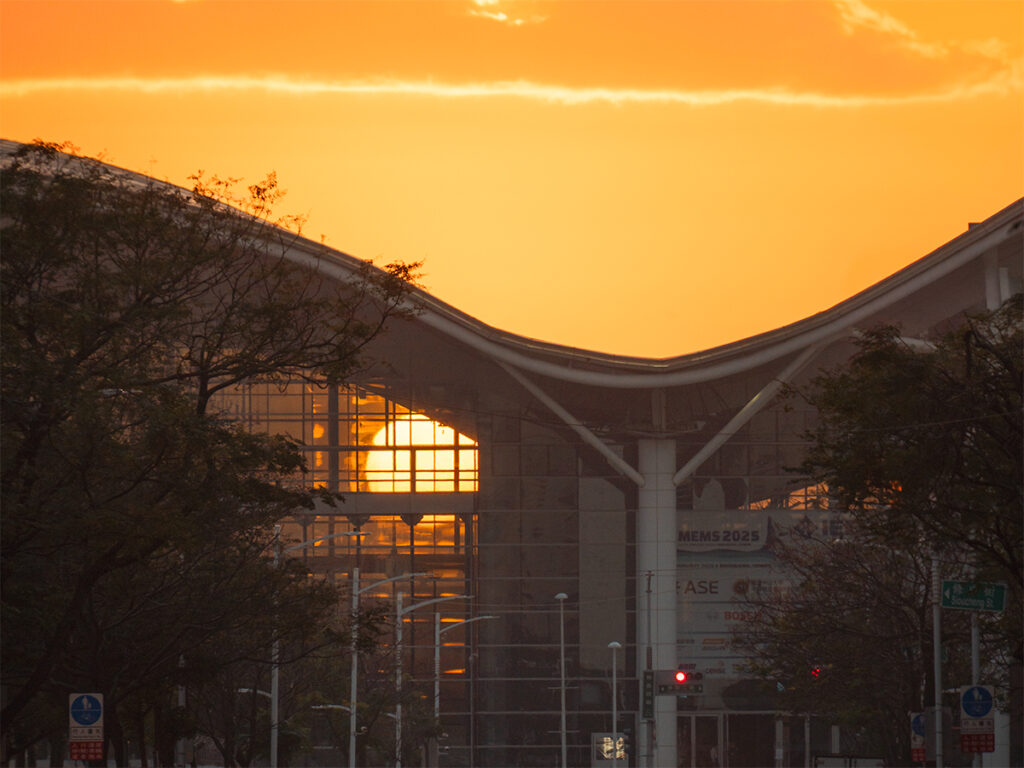
To keep up to date with everything I share, follow along on my social media and read up on what camera gear I use when I travel.
Leave a Reply Cancel reply
© Erin Donahue Creative LLC, All Rights Reserved
Terms of Service & Privacy Policy